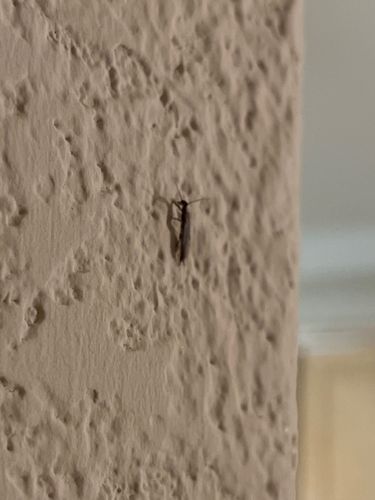Plume Moth
Scientific Name: Pterophoridae
Order & Family: Lepidoptera, Pterophoridae
Size: Wingspan typically ranges from 15 to 35 mm (0.6 to 1.4 inches).

Natural Habitat
Found in various environments including gardens, grasslands, woodlands, and urban areas. Often attracted to lights at night.
Diet & Feeding
Larvae (caterpillars) feed on the leaves, flowers, or seeds of various plants, often specific to certain plant families. Adults typically do not feed or feed on nectar.
Behavior Patterns
Plume moths are characterized by their T-shaped resting posture, where their wings are held out to the sides at right angles to their body. Their wings are often deeply cleft into feather-like plumes. They are primarily nocturnal but can sometimes be seen during the day.
Risks & Benefits
Generally, plume moths pose no significant risks to humans. While some species can be considered minor crop pests due to their larval feeding, most are harmless. They contribute to the ecosystem as herbivores and a food source for other animals.
Identified on: 9/18/2025